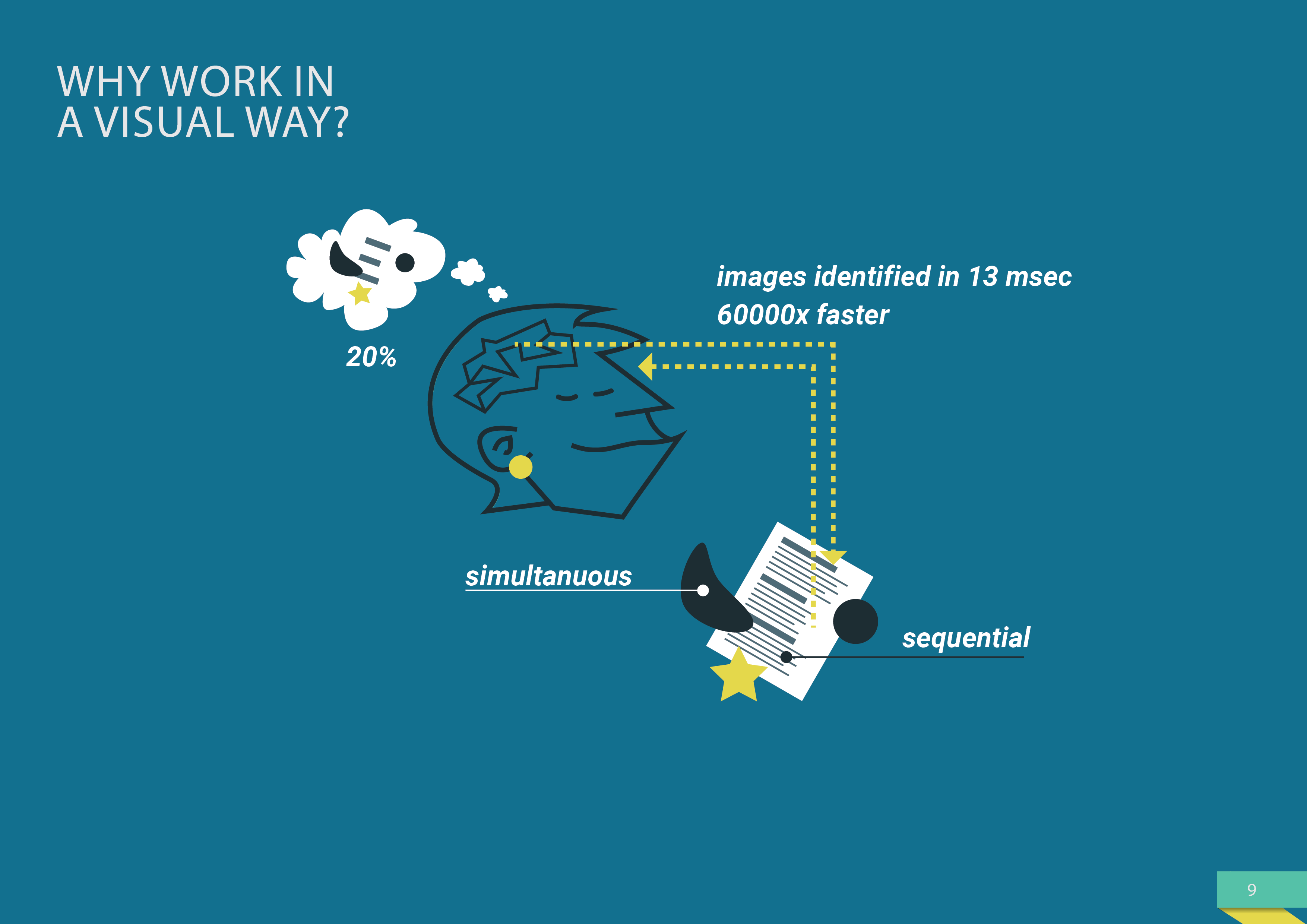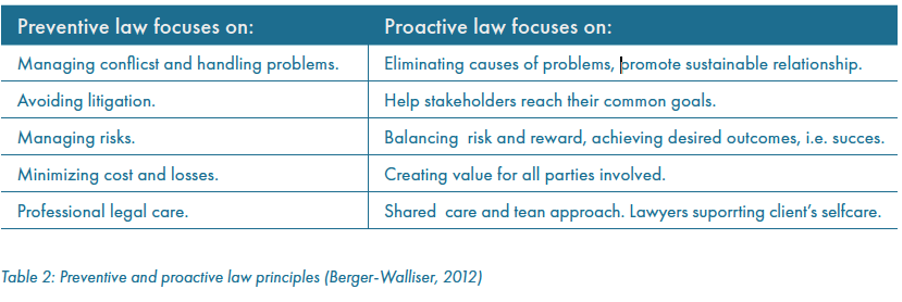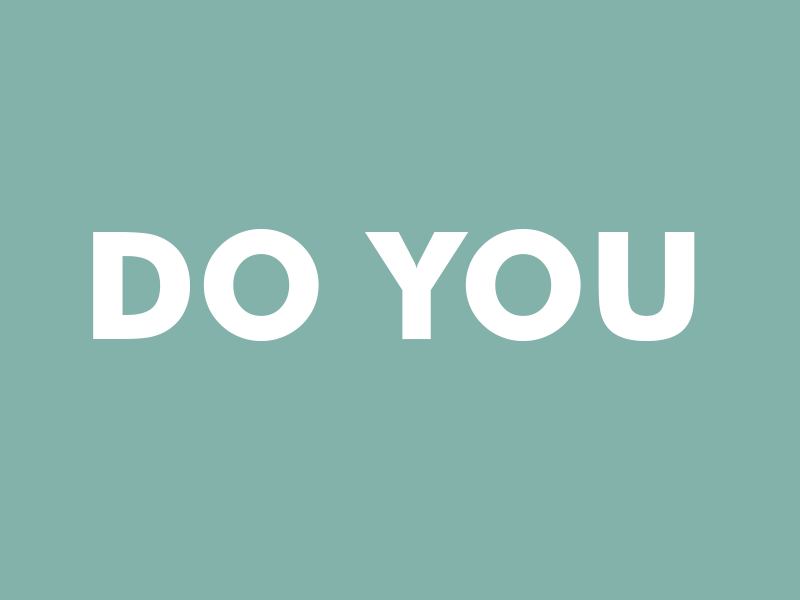
Maybe you have heard and read before about Legal Design Thinking. If you already exactly know what it is, how you can use it and what it can do for you(r business), stop reading. But if you’re curious and open-minded to learn more, this post is there for you. We will explain (our vision on) Legal Design Thinking in a clear, visual and easy to understand way.
We will discuss:
- Legal Design Thinking: the definition
- Why using Legal Design Thinking
- The impact of Legal Design Thinking
Legal design thinking: the definition
Legal design thinking is the cross-discipline ofLegal Thinking, Design Thinking, Visual Thinking, User Experience (UX) Design,Pro-active Law, Co-creation and Plain Legal Language. We use these disciplines to enhance the human friendliness of understanding and applying the law, since the law is meant to create order in society and make a peaceful living and working environment for everybody.
In one sentence we would define Legal Design Thinking as:
“Understanding the context and needs of people interacting with law to adjust mindset, documents, processes and services that deliver legal empowerment and access to justice for all.”

Design Thinking
Design Thinking relates to the law since it focuses on improving quality of life with services, experiences and products, which affects human behaviour. It uses empathy and design research techniques to elicit latent needs of people, in order to create new solutions, innovations and improvements of existing products and services. You can review the different phases in this iterative approach below.
THE PROCESS
Design Thinking process
The process of design thinking exists of five phases: 'Empathise', 'Define', 'Ideate', 'Prototype' and 'Test'. Every project can start in a different phase, depending on the work that already has been done and the goals that are set. For our workshops and trainings we focus on either the ‘Empathize phase’ including Empathise, Define and Ideate, or the ‘Make phase’, starting from ideate until Testing.
Empathise
Empathizing with the end user, client or person who you design for is central in design thinking. There are many different design research techniques to elicit deep user insights.
Test
By testing the prototype new insights will be gained on the user experience of the concept and if it actually solves the original problem. Testing can be more explorative or evaluative, depending on the phase of design process.
Prototype
The concepts will be transformed into prototypes that can be tested with real users and within context. Prototypes can be sketch prototypes, storyboards, clickable apps or detailed interactive apps.
Ideate
Based on the Design vision, created in the Define phase, we start brainstorming and sketching ideas. Based on structured decision making we work out ideas into proper concepts that can be prototyped.
Define
Before starting to ideate and brainstorm on ideas and solutions, we detail or redefine the problem statement. What is the problem behind the problem? And what is the scope and relevant topic to focus on in the design process?

Visual Thinking
Furthermore, Visual Thinking is a method widely applied within the design thinking or service design approach. It can make complex stories more tangible and easier to grasp. It is an easy way to get started with opening the creative mindset, which is why we always integrate it into our training and workshops.


UX Design
In addition, UX (User Experience) design is used to create engaging experiences online. Widely used by companies to, for example, improve conversion in sales.

co-creation
Co-creation is essential in Legal Design Thinking because innovating the legal system we’ll need people from all sorts of backgrounds, mindsets and skills to make the law more accessible to all. Next to that, in a co-creation approach people can experience themselves what the effect of a redesign of a service or document is by co-creating, prototyping and testing it together, while making sure it fits the context in which the new service or document will be applied and integrated.

proactive law
Pro-active law is a movement in the legal field that focuses on the strategic value that the law can bring regarding building more sustainable relationships. While preventive law focuses on the prevention of conflicts and litigation. Below you can find an overview of the differences between preventive law and proactive law.


Plain legal language
Plain Legal Language focuses on clear wordings and short sentences to get to the point of bringing across a message for all levels of literacy. It is a skill in itself, especially to write plain legal language, to retain the legal meaning of the wordings into a legal document
A well applied legal design approach takes into account all these aspects, and integrating the legal aspect from the beginning, taking a proactive lawyering approach (not focusing on the risks too much, but looking at the opportunities to strengthen business from a legal mindset competitive advantage with strategic and legal decisions, which a redesigned for ethical conversion).
Why using legal design thinking
Using a mind-set, tools and methods to create empathy, Design Thinking can create the bridge between the legal (tech) world and people. Empathy forms the key! It allows lawyers to have a more effective client interview and better communication throughout the entire case. This helps to bring across their knowledge and skills in a way that is accessible for laymen while preserving the delicate legal value.
Legal Design Thinking is not only interesting for you as a lay person, consumer or citizen who might want to contribute in testing our designs to make sure they have a better experience and reach their goal of easy to grasp content or in whatever manner you interact with law. It is especially very interesting for businesses. With Legal Design Thinking you improve collaboration between marketing, legal and sales and bridge the communications barrier between legal, business and customers.
An example
Let’s take a webshop as an example. Marketing and sales are working constantly on improving the customer journey and conversion of sales. Everything is designed to ‘seduce’ the customer and to make the purchasing process as simple as possible. When shopping is done and people navigate to the basket to check-out, the customer has to accept the Terms & Conditions. Mostly a text filled webpage full of difficult words and complicated sentences - if people actually open those documents. How does this fit in the ideal (ethical)customer journey? By using Legal Design Thinking, we can make this last step in the journey a transparent and empowering experience. Valid, easy to understand for your customers and perfectly tailored to your organization, while creating a competitive advantage by explicitly caring about your customers’ rights. We challenge businesses to address these corporate strategic responsibilities and are convinced you can create long term business impact with those ethical shifts. If still sceptical, look at the impact businesses make after changing to a more sustainable and ethical approach.

The impact of legal design thinking
To conclude, it is good to summarize what the impact of Legal Design Thinking can entail.
- Renewed focus on how to serve clients
- New concepts of how to create and deliver value
- Better interfaces & tools for clients to interact with the legal services/ legal aspects of services
- Increased ability to secure users’ attention & get them follow through with legal processes
- More holistic integration of legal grounds into services
- Explore less-text options for communications, that have more resonance & improve comprehension
- Take advantage of interactive digital technology to create usable, satisfying communication experiences.
- Better structure of the services themselves, to be more efficient process-based and intuitive
Legal Design Thinking will make the law more accessible,more usable and more engaging. We will redesign how everyone can use the law and make legal tools that are user-friendly. This will empower people to get in control of their rights and duties.
Also want to create this impact and learn about Legal Design Thinking? Read all about it on our Academy page.
